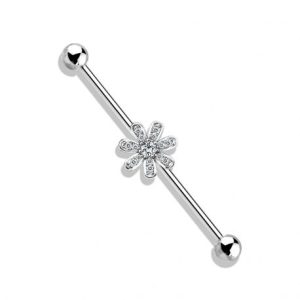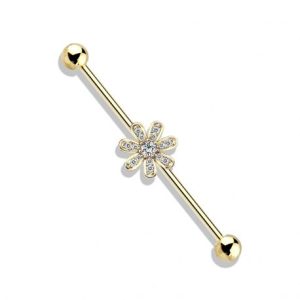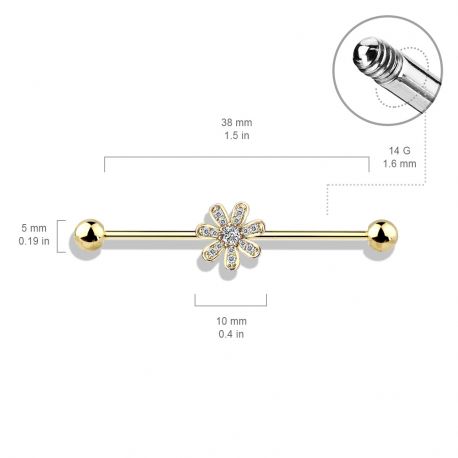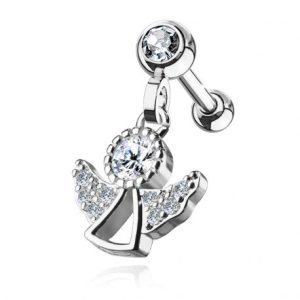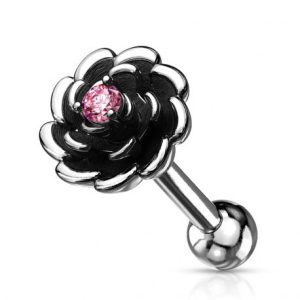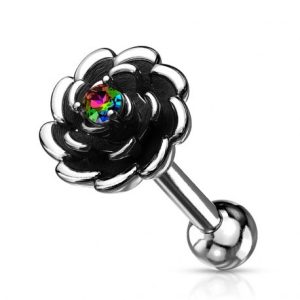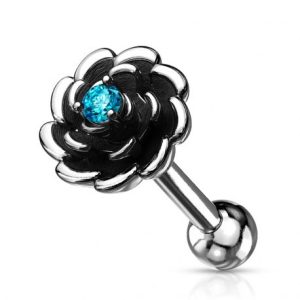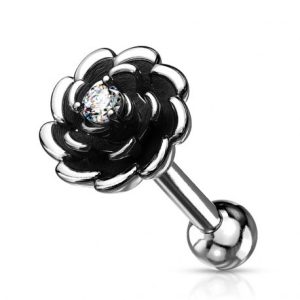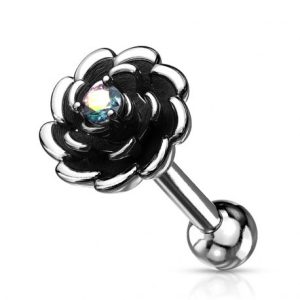Ear Piercing
Ear Piercing: A Comprehensive Guide to Styles, Safety, and Aftercare
Ear piercing is the practice of making a hole in the earlobe or other parts of the ear to insert jewelry. It is one of the oldest forms of body modification, with evidence dating back to ancient civilizations. Today, ear piercing is a common practice around the world and is often considered a fashion statement or personal expression.
Ear anatomy and piercing styles
Before we dive into the world of ear piercing, let’s understand the basics of ear anatomy. The ear is composed of three main parts: the outer ear, the middle ear, and the inner ear. The outer ear consists of the auricle or pinna, which is the visible part of the ear, and the earlobe, which is the soft fleshy tissue at the bottom of the auricle. The middle ear contains the eardrum and three small bones called ossicles that transmit sound to the inner ear. The inner ear contains the cochlea, which is responsible for hearing, and the vestibular system, which controls balance.
Voir cette publication sur Instagram
When it comes to ear piercing, there are several styles to choose from, depending on your preferences, anatomy, and pain tolerance. The most common type of ear piercing is lobe piercing, which involves making a small hole through the earlobe with a piercing needle. This is usually the first piercing that people get and can be done on both ears at the same time. Lobe piercings heal relatively quickly and are versatile in terms of jewelry choices.
Cartilage piercing, on the other hand, involves piercing through the harder, thicker tissue of the outer ear, usually above the lobe. This can be more painful and take longer to heal than lobe piercing, but it also offers more options for creative jewelry and placement. Some popular cartilage piercing styles include the helix piercing, which goes through the upper rim of the ear, and the conch piercing, which goes through the inner part of the ear near the shell.
Voir cette publication sur Instagram
Other ear piercing styles include the industrial piercing, which connects two holes in the upper ear with a barbell, the tragus piercing, which goes through the small flap of cartilage in front of the ear canal, and the daith piercing, which goes through the innermost fold of cartilage above the ear canal. Each piercing style has its own pros and cons in terms of aesthetics, pain, healing time, and potential complications.
Types of Ear Piercings
Each type of ear piercing has its own style and location. So it’s important to think carefully about what type of piercing is right for you before you get pierced.
Here is the complete list of ear piercings:
-
Earlobe Piercing
The most common type of ear piercing, located on the soft, fleshy tissue at the bottom of the ear. It is a simple and quick process, and can be done with a piercing gun or needle. Earlobe piercings are versatile and can accommodate a wide range of jewelry styles, from studs to hoops to dangles.
-
Cartilage Piercing
Located on the harder cartilage tissue of the ear, often on the upper rim or the flat part of the ear. Cartilage piercings can be more painful and take longer to heal than earlobe piercings. It is important to choose a professional piercer who uses proper techniques and sterilization methods to minimize the risk of infection.
-
Industrial Piercing
Involves two holes connected by a single piece of jewelry, typically on the upper ear. Industrial piercings can be quite striking and edgy, but they require careful consideration of the placement and size of the jewelry to avoid discomfort or complications.
-
Tragus Piercing
Located on the small flap of skin that covers the ear canal. Tragus piercings can be a bit more challenging to perform due to the small size of the area and the need for precision. However, they can be a great option for those who want a subtle yet stylish piercing.
-
Daith Piercing
Located on the innermost fold of cartilage, above the ear canal. Daith piercings have gained popularity in recent years for their aesthetic appeal and potential for relieving migraines or other headaches. However, the scientific evidence for this claim is limited, and it is important to consult with a medical professional before relying on a piercing for health benefits.
-
Helix Piercing
Located on the outer rim of the ear, typically on the upper part. Helix piercings are a classic and versatile option, allowing for a range of jewelry styles and placements. They can be done on one or both sides of the ear, and can be combined with other piercings for a unique look.
-
Rook Piercing
Located in the fold of cartilage between the inner and outer conch. Rook piercings are a bit more unusual and less common than other ear piercings, but can add a subtle yet stylish element to the ear. They require careful placement and jewelry selection to avoid discomfort or complications.
-
Conch Piercing
Located in the central part of the ear, where the helix and earlobe meet. Conch piercings can be done in either the inner or outer conch, and can accommodate a range of jewelry styles from studs to hoops to barbells.
-
Snug Piercing
Located in the inner cartilage of the ear, parallel to the outer rim. Snug piercings are a bit more challenging and require careful placement and jewelry selection to avoid discomfort or complications. They can be a unique and stylish addition to the ear.
-
Orbital Piercing
Involves two piercings connected by a single piece of jewelry, typically on the earlobe or upper ear. Orbital piercings can be a bit more complex and require careful placement and jewelry selection to avoid discomfort or complications. They can be a great option for those who want a unique and eye-catching piercing.
-
Anti-Tragus Piercing
Located opposite to the tragus piercing, on the outer cartilage of the ear. Anti-tragus piercings can be a bit more challenging due to the small size of the area and the need for precision. However, they can be a great option for those who want a subtle yet stylish piercing.
-
Transverse Lobe Piercing
Involves a horizontal piercing through the earlobe. Transverse lobe piercings are a unique and eye-catching option for those who want a more unusual ear piercing. They require careful placement and jewelry selection to avoid discomfort or complications.
-
Forward Helix Piercing
Located at the front of the ear, where the ear meets the head. Forward helix piercings can be a bit more challenging due to the small size of the area and the need for precision. However, they can be a great option for those who want a subtle yet stylish piercing.
-
Triple Forward Helix Piercing
Involves three forward helix piercings in a row. Triple forward helix piercings can be a bit more complex and require careful placement and jewelry selection to avoid discomfort or complications. They can be a great option for those who want a more unique and eye-catching piercing.
-
Vertical Lobe Piercing
A piercing that goes straight down through the center of the earlobe. Vertical lobe piercings can be a bit more challenging and require careful placement and jewelry selection to avoid discomfort or complications. They can be a great option for those who want a more unusual and eye-catching ear piercing.
| Ear Piercing Type | Placement | Price Range | Pain Level | Healing Time | Jewelry Types |
|---|---|---|---|---|---|
| Earlobe Piercing | Soft, fleshy tissue at bottom of ear | $20-$50 | 2/10 | 4-6 weeks | Studs, hoops, dangles |
| Cartilage Piercing | Harder cartilage tissue of ear | $30-$60 | 4/10 | 4-12 months | Studs, hoops, barbells |
| Industrial Piercing | Two holes connected by single piece of jewelry, upper ear | $50-$100 | 7/10 | 6-12 months | Barbells |
| Tragus Piercing | Small flap of skin covering ear canal | $30-$50 | 5/10 | 3-9 months | Studs, hoops, dangles |
| Daith Piercing | Innermost fold of cartilage above ear canal | $30-$50 | 4/10 | 3-9 months | Rings, curved barbells |
| Helix Piercing | Outer rim of ear, upper part | $30-$50 | 4/10 | 3-12 months | Studs, hoops, barbells |
| Rook Piercing | Fold of cartilage between inner and outer conch | $30-$50 | 6/10 | 3-9 months | Rings, curved barbells |
| Conch Piercing | Central part of ear where helix and earlobe meet | $30-$50 | 5/10 | 3-9 months | Studs, hoops, barbells |
| Snug Piercing | Inner cartilage of ear, parallel to outer rim | $30-$50 | 6/10 | 3-9 months | Rings, curved barbells |
| Orbital Piercing | Two piercings connected by single piece of jewelry, earlobe or upper ear | $50-$100 | 7/10 | 6-12 months | Studs, hoops, barbells |
| Anti-Tragus Piercing | Outer cartilage of ear, opposite to tragus piercing | $30-$50 | 6/10 | 3-9 months | Rings, curved barbells |
| Transverse Lobe Piercing | Horizontal piercing through earlobe | $30-$50 | 5/10 | 2-4 months | Studs, hoops, barbells |
| Forward Helix Piercing | Front of ear where ear meets head | $30-$50 | 5/10 | 3-9 months | Studs, hoops, barbells |
| Triple Forward Helix Piercing | Three forward helix piercings in a row | $60-$100 | 6/10 | 3-9 months | Studs, hoops, barbells |
| Vertical Lobe Piercing | Straight down through center of earlobe | $30-$50 | 5/10 | 3-9 months | Studs, hoops, barbells |
What is the pain level of ear piercing?
The pain level associated with an ear piercing can vary depending on the location of the piercing. Generally, cartilage piercings are known to be more painful than earlobe piercings due to the harder cartilage tissue. Among cartilage piercings, piercings in the inner ear tend to be more painful than those in the outer ear, as the inner ear contains tougher cartilage.
Based on this, the most painful ear piercings are typically the daith and tragus piercings. The daith piercing is located in the innermost fold of cartilage above the ear canal, which can be a particularly sensitive area. The tragus piercing is located on the small flap of skin that covers the ear canal and can also be quite painful due to the dense cartilage in the area.
Voir cette publication sur Instagram
Other ear piercings that are known to be relatively painful include the snug and rook piercings. The snug piercing is located in the inner cartilage of the ear, parallel to the outer rim, and the rook piercing is located in the fold of cartilage between the inner and outer conch.
It’s important to note that pain levels can vary from person to person and can also depend on factors such as individual pain tolerance, the skill of the piercer, and proper aftercare.
How long does it take for pierced ears to heal?
The length of time it takes for an ear piercing to heal can vary depending on several factors, including the location of the piercing, the type of jewelry used, and how well you take care of the piercing.
Here are some general guidelines for how long different types of ear piercings take to heal:
- Earlobe piercings typically take 4-6 weeks to heal, but can take up to 3 months to fully strengthen.
- Cartilage piercings can take anywhere from 4-12 months to heal, depending on the location and type of jewelry used.
- Industrial piercings can take 6-12 months to heal due to the placement and need for two holes to heal simultaneously.
- Tragus and daith piercings typically take 3-9 months to heal.
- Helix, rook, conch, and snug piercings typically take 3-9 months to heal.
To promote healing and prevent infection, it’s important to follow proper aftercare instructions during the healing process.
How to clean ear piercing?
Cleaning your ear piercing is an important part of the healing process and can help prevent infections. Here are some steps to follow for cleaning your ear piercing:
- Wash your hands with soap and water before touching your piercing.
- Clean the piercing twice a day with a saline solution or gentle soap and water. To make a saline solution, mix 1/4 teaspoon of non-iodized sea salt with 8 ounces of warm water. Soak a cotton ball or pad in the solution and gently clean around the piercing. You can also use a saline spray or piercing aftercare solution.
- After cleaning, gently pat the area dry with a clean paper towel or tissue. Do not use a cloth towel, as it can harbor bacteria.
- Avoid touching or twisting the piercing, as this can introduce bacteria and delay healing.
- Avoid swimming or soaking the piercing in water, as this can increase the risk of infection. If you must swim, use a waterproof bandage to cover the piercing.
- Avoid sleeping on the piercing, as this can cause irritation and delay healing.
- Avoid using alcohol or hydrogen peroxide to clean the piercing, as these can be too harsh and damage the healing tissue.
It’s important to continue cleaning your ear piercing until it is fully healed, which can take several weeks to several months depending on the type of piercing. If you experience any signs of infection, such as redness, swelling, or discharge, or if the piercing is not healing properly, contact your piercer or a healthcare professional for advice.
How much does it cost to get your ears pierced?
The cost of getting your ears pierced can vary depending on several factors, such as the location, the type of piercing, and the type of jewelry used. Here are some general price ranges for ear piercings:
- Earlobe piercings: Earlobe piercings are typically the least expensive option and can cost anywhere from $20 to $50.
- Cartilage piercings: Cartilage piercings are usually more expensive than earlobe piercings, with prices ranging from $30 to $100 or more.
- Specialty piercings: Specialty piercings, such as industrial, tragus, or daith piercings, can be more expensive than other types of piercings due to their complexity and the skill level required. Prices for these types of piercings can range from $50 to $150 or more.
- Jewelry: The cost of jewelry can also impact the overall cost of your ear piercing. Higher quality, more expensive jewelry can increase the cost of your piercing. Sometimes jewelry is included in the price, but always ask.
It’s important to choose a reputable piercer and studio, even if it means paying a bit more. You don’t want to sacrifice quality for a lower price and risk a poor outcome or complications. Additionally, some studios may offer deals or discounts for multiple piercings or for returning customers, so be sure to ask about any specials or promotions.
What are the best places to get your ears pierced?
If you are ready to get your ears pierced, there are several different locations to consider, including your local jewelry store, the mall, and even some doctor’s offices. However, if you want to ensure the best possible experience, a professional piercing studio is the way to go.
@mirrdo.piercings HIGH LO(V)E 😠we love this combo 🥹 @llariss_ #piercing #piercings #piercingvideos #piercingvideo #piercingstudio #piercinglover #bodypiercing #earpiercing ♬ Slow Motion – AMARIA BB
Not only do professional piercing studios offer a clean and sterile environment, which is crucial for preventing infections, but their piercers are also experienced and knowledgeable in the proper technique for piercing ears. This means that your piercing will be quick and painless.
Additionally, professional piercing studios use high-quality jewelry made from safe materials, which is essential for avoiding allergic reactions and infections. Low-quality jewelry can cause a range of problems, and it’s important to prioritize the health and safety of your ears.
Overall, while there are many options for ear piercings, choosing a professional piercing studio is the best choice for ensuring a safe and pleasant experience.
There are several places where you can get your ears pierced. Some of the most common options include:
- Jewelry stores: Many jewelry stores offer ear piercing services, and some even provide a complimentary piercing with the purchase of earrings.
- Piercing studios: Piercing studios specialize in body piercings and often have a wider range of piercing options and jewelry to choose from.
- Beauty salons: Some beauty salons offer ear piercing services in addition to their hair and nail services.
- Department stores: Some department stores have beauty or jewelry sections that offer ear piercing services.
- Medical clinics: Some medical clinics or doctors’ offices may offer ear piercing services as well.
What types of jewellery is best for ear piercings?
When it comes to selecting jewelry for ear piercings, it’s important to choose high-quality materials that are safe for your skin and won’t cause an allergic reaction. The most common materials for starter earrings or fresh piercings are surgical-grade stainless steel, surgical-grade titanium, 14-karat gold, 18-karat gold, and niobium. These materials are hypoallergenic, durable, and unlikely to cause skin irritation.
If you have a known allergy to certain metals, it’s important to invest in starter earrings that will not irritate your skin. Allergic reactions to earrings can cause swelling, bleeding, and itching, which can make the healing process uncomfortable and unpleasant. Consult with your piercer to determine the best options for your specific allergy and ear piercing. By selecting the right jewelry and taking proper care of your piercing, you can help ensure a smooth and successful healing process.
What jewelry is safe to wear after a new ear piercing has healed?
Once your new ear piercing has healed, there are various types of earrings you can wear to show off your new piercing. Along with popular choices such as stud earrings, hoop earrings, dangle earrings, and huggie earrings, there are other options to consider as well. Curved barbell, barbell dangle, and ring ear stud earrings are all additional styles that can be worn safely after your new piercing has healed.
However, it’s important to choose earrings that are appropriate for your specific piercing and made from safe materials to prevent any potential irritation or infection.
Here are some types of earrings you can wear after your new piercing has healed:
- Stud earrings: These are a popular choice for everyday wear, and come in a variety of styles and materials.
- Hoop earrings: Hoops can add a bit of flair to your piercing, but be sure to choose a size that won’t get caught on clothing or hair.
- Dangle earrings: These can be a fun way to show off your new piercing, but be sure to choose lightweight styles to avoid putting unnecessary strain on your piercing.
- Huggie earrings: These are small hoop earrings that hug the earlobe, and can be a comfortable and stylish option for everyday wear.
No matter what type of earrings you choose, be sure to select ones made from safe materials, such as surgical-grade stainless steel or titanium, solid gold (14k or higher), or platinum, to avoid any potential allergic reactions or irritation. And always follow proper aftercare instructions to keep your ear piercing healthy and looking great.
What are the risks of ear piercing?
Ear piercing, like any body modification, carries a risk of complications. Some potential complications of ear piercing include keloids, hypertrophic scars, allergic reactions, and migration or rejection of the jewelry. These can be prevented or minimized by choosing the right piercing studio and jewelry, following the aftercare instructions, and avoiding any trauma or pressure on the piercing.
- Allergic reactions: Some types of piercing jewelry, particularly those made of nickel, can cause allergic reactions.
- Skin infections: Ear piercings can lead to skin infections, which can cause redness, swelling, pain, or pus-like discharge.
- Oral complications: Tongue piercings can lead to chipping or cracking of teeth, damage to gums, and difficulty in chewing, swallowing or even breathing due to tongue swelling.
- Scarring: Ear piercings can cause scars or raised areas on the skin due to the overgrowth of scar tissue known as keloids.
- Bloodborne diseases: Contaminated piercing equipment can lead to the spread of bloodborne diseases, including hepatitis B, hepatitis C, tetanus, and HIV.
- Tearing or trauma: Jewelry can accidentally get caught and torn out, requiring stitches or other medical attention.
How to treat an infected ear piercing?
It’s important to seek prompt medical attention if you suspect your ear piercing is infected. Untreated infections can lead to complications and delay healing.
- See a healthcare professional: If you suspect that your ear piercing is infected, it’s important to see a healthcare professional, such as a doctor or a piercer, as soon as possible. They can assess the severity of the infection and recommend appropriate treatment.
- Clean the piercing: Continuing to clean the piercing is important, but avoid using harsh cleaning solutions like alcohol or hydrogen peroxide. Instead, use a saline solution or piercing aftercare solution to clean the piercing twice a day. Avoid touching or twisting the piercing.
- Use warm compresses: Apply a warm compress to the infected area to help reduce swelling and pain. Soak a clean cloth in warm water and apply it to the piercing for 5-10 minutes, several times a day.
- Take pain relievers: Over-the-counter pain relievers like acetaminophen or ibuprofen can help reduce pain and swelling.
- Avoid removing the jewelry: Removing the jewelry from an infected piercing can cause the hole to close and trap the infection inside, making the infection worse. Leave the jewelry in place unless instructed to remove it by a healthcare professional.
- Avoid swimming or submerging the piercing: Avoid swimming or submerging the infected ear piercing in water, as this can introduce more bacteria and make the infection worse.
- Follow your healthcare professional’s advice: If your healthcare professional prescribes antibiotics or other medications, be sure to take them as directed and follow any other advice they give you.
FAQs
How old do you have to be to get your ears pierced?
In most countries, there is no specific legal age requirement for getting your ears pierced, but many piercing studios have their own policies and guidelines. Some may require parental consent or a minimum age, such as 16 or 18 years old, depending on the type and location of the piercing.
What is the best piercing for sensitive ears?
If you have sensitive ears or a history of allergies, it’s best to choose jewelry made of hypoallergenic and non-reactive materials, such as titanium, surgical steel, or gold. Lobe piercings are usually the safest and most common option for sensitive ears, as they have a higher blood supply and lower risk of infection or complications.
Can you pierce your ears with a needle at home?
It is not recommended to pierce your ears at home with a needle or other non-sterile tools, as it can increase the risk of infection, scarring, and other complications. Professional piercers use sterile and single-use needles and follow strict hygiene and safety protocols to ensure a safe and successful piercing.
How do you know if your ear piercing is infected?
Some signs of an infected ear piercing include redness, swelling, pain, discharge, odor, and fever. You may also notice a bump or pimple-like lesion around the piercing. If you suspect an infection, seek medical attention or contact your piercer immediately.

